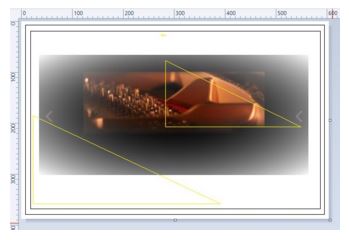
Mediterranea
A Journal of Cultural Anthropology and Ethnomusicology
( 2 /2017)
Monumenta
Dotium
Semiticarum

Le Law-Letters
di Sa-am-su-iluna

Studi preliminari
L.W. King, Letters and Inscriptions of Ḫammurabi, (Vol. III , London, Luzac and Company 1900).
https://archive.org/stream/cu31924104781285#page/n199/mode/2up
Publications of the Babylonian Section, Volume 1, Issue 2
Amazon.it: University of Pennsylvania University M.
Karen Radner, State Correspondence in the Ancient World
https://books.google.it/books?isbn=0199354774
Anson F. Rainey-William M. Schniedewind-Zipora Cochavi-Rainey, The El-Amarna Correspondence (2 vol.)
https://books.google.it/books?isbn=9004281541
A. Leo Oppenheim, Letters From Mesopotamia: Official, Business, and Private Letters
http://oi.uchicago.edu/research/publications/misc/letters-mesopotamia-official-business-and-private-letters-clay-tablets
Daniel David Luckenbill, Ancient Records of Assyria and Babylonia Volume 2
http://oi.uchicago.edu/research/publications/misc/ancient-records-assyria-and-babylonia-volume-2-historical-records-assyria

The Reed Baskets Letter
La fonte in PBS 1/2 13 e il genere degli Orders for Trials di Sa-am-su-iluna.
Analisi redazionale e sintesi antropologico-culturale
di Davide Polovineo
Marzo 7/2016
"Go to Nippur, to the city where there are judges"
(PBS 7/7)
1 Per una ricomprensione del genere degli Orders for Trials
"The Tradition that ensures fot the inhabitants of the large Cities of Babylonia (mainly Sippar, Nippur and Babylon) special exemptions from royal Taxes and Services is attested sporadically as early as the third Phase, but it achieved political importance only during the Phase under discussion" (A. LEO OPPENHEIM, Letters from Mesopotamia, The University of Chicago Press, Chicago 1967, cit. p.45): l'intrigante Cultural Background delineato, lapidariamente, da Oppheneim è alla base della Redaktion Kritik della Reed Baskets Letter di Sa-am-su-iluna [fonte presente in PBS 1/2 13 (Meas. 91 x 49 x 24 well preserved: slightly baked; Rev. uninscribed; gray. Insc. I I (obv.) = I I li.)] indirizzata ai be-el te-ri-e- tim u daiânê ša Nippur.
La tesi che voglio dimostrare nel presente articolo è la seguente: la Reed Baskets Letter di Sa-am-su-iluna è un Order for Trials. Infatti la fonte, redazionalmente, deve essere comparata con le Sa-am-su-iluna's Law-Trials-Letters [Orders for Trials: Brit. Mus. No. 12,815; pl. 3. No. 2; cfr. amēlu ši-i-bi ša i-ga-ab-bu-ḳu / a-na ma-aḫ-ri-ia tu-ur-dam (Brit. Mus. No. 12,815; pl. 3. No. 2, Rev. 12-15)] documenti che rivelano, a mio parere, la presenza di un self government (giuridico-amministrativo) nel periodo dell'Hammurapi's Dynasty: "Following an earlier analysis of Diakonoff (1969)- afferma Robert McC Adams- Seri believes that organs like a council of elders (šibūtum) and popular assemblages (ālum, Kārum, puḫrum) became strong enough to have survived later even under Hammurabi's overbearing control as " community organs of self-government that coexisted with the state (2005:47)" [cfr. R. McC ADAMS, Old babylonian Networks of urban Notables in "Cuneiform Digital Library Journal" 7 (2009) p.9; I.DIAKONOV, Ancient Mesopotamia: Socio-economic History, Mosca 1969; A. SERI, Local Power in Old Babylonian Mesopotamia. Studies in Egyptology and the Ancient Near East, London 2005, p.47].
Lo stesso sistema giuridico nippuriano, in effetti, è in simbiosi con il sistema del self-government. Le Law-Trials-Letters (orders fro Trials), infatti, rivelano, a mio parere, un mentalità liberale nippuriana! E' necessario affermare che, già agli inizi del novecento, L.W.King, presentando le caratteristiche socio-economiche del periodo di reggenza di Sa-am-su-iluna (e soprattutto le cause del contrasto tra il re e i fishermen), ipotizzava la presenza di un self-government: "It is quiete clear that at this period the Babylonians lived after an exceedingly primitive fashion, and that their pursuits were chiefly pastoral and agricultural; their religious Ideas and beliefs were, of course, characteristic of the grade of civilization to which they had attained" (L.W. KING, Letters and Inscriptions of Ḫammurabi, Vol. III , London, Luzac and Company 1900 Pref. XI).
Marc van de Mieroop in Society and Enterprise in Old babylonian Ur (BBVO 12, Berlin 1992) e, successivamente, Anne Goddeeris in Economy and Society in Northern Babylonia in the Old Babylonian Period (OLA 109, Leuven 2002) riprendono, nelle loro analitiche, la tesi del self-government nell'Old Babylonian Period. Anne Goddeeris afferma in tal senso: "The creditor is able accumulate capital and land at the expense of the debtor and in spite of the regulations, agricoltural land gets increasingly concentrated in the hands of families of richer individuals..... Thus, the royal regulations can only delay the downfall of the Old Babylonian economy, as this economy flourishes on the basis of small holding farmers" [Goddeeris cit. in Robert McC Adams, art. cit, p.8].
Socio-economicamente, la caratteristica del periodo di reggenza di Sa-am-su-iluna, in continuità con la struttura amministrativa dell'Old babylonian period, è l' "illuminismo giuridico- amministrativo". Marc van de Mieroop, partendo dall'analisi delle fonti documentarie, già ipotizzava un private system nell'Old Babylonian Period: ".....tablets from the [Old Babylonian period] in general derive primarily from private archives, and therefore shed light on various private affairs such as inheritances, debts, marriages, ecc.. Informations on the roles of the palace and the temples has to be gleaned from such documents, and the role of these institutions is clearly insufficiently represented. The Idea of the progression in Babylonia from temple dominated to palace dominated economies in the second half of the third millenium and the triumph of private enterprise in the early second millenium, was heavily influenced by the origin of the sources, and has been modified only recently" (M. VAN DE MIEROOP, Society and Enterprise in Old babylonian Ur, BBVO 12, Berlin 1992, 3). Infatti l'emergency regulation della private enterprise (Identity Systems: cfr.per la terminologia J. ASSMANN, La memoria culturale. Scrittura, ricordo e identità politica nelle grandi civiltà antiche, Torino 1997, p.122) è la testimonianza del grade of civilitation della dinastia hammurapiana.
E' necessario ricordare, per la comprensione del genere letterario della Reed Baskets Letter, che nel Sam-su-iluna's "private system" giuridico-amministrativo di Nippur, gli "ufficiali governativi" appartenenti alle creditors' families, i be-el te-ri-e-tim (cfr. guenna-official of Nippur della Royal Kassite Court delle Middle babylonian Letters) e, probabilmente, gli stessi giudici-daiânê gestivano anche il settore manifatturiero:
To the supreme commander/ And the Judges of Nippur / Speak./ Thus says Samsu-iluna:- / I, now, despatch a sergeant-major of / the quartermaster's corps with/ his troops./ With the reed-baskets of Zinatum/ Which are deposited at Nippur/ Entrust them,/ And into my presence/ Let them bring (them) [Trad. PBS 1/2 13 pp. 86-87].
2 Un dettaglio ......redazionale
Redazionalmente, per comprendere il be-el te-ri-e-tim and daiânê management nel Socio-Cultural Background nippuriano delle creditors' families dobbiamo "ri-chiamare" una lapidaria affermazione di Oppenheim: "The must once have been an emergency regulation, but it turned into an institution under the kings of the Hammurapi dynasty". (cfr. A. LEO OPPENHEIM, Letters from Mesopotamia, p. 40). Immediata e ricca di profonde mediazioni l'affermazione di Oppenheim ci permette di "com-prendere" un'altra figura storica idealtypica nippuriana nella fonte PBS 1/2 13: con l'associazione lessicale išten (one)+ dekam NU-ŠÀG [..] KI or NU-KI, probabilmente è presente l'enigmatica figura del capitano-generale [cfr. NU-ŠÀG (ṢAB ? ) KI or NU-KI con NU-ŠÀG // NUN (Prince)// ŠÀG//ŠÀG-GI // ŠÀGAN LAL -NAB TUR: cfr. Brit. Mus. No. 81-8-30; pl. 106; No 59], "personalità nippuriana" appartenente ai quartermaster's corps (cfr. la costruzione ga-du-um+ ummânišu). E' interessante la proposta di Robert McC Adams nell'articolo Old babylonian Networks of urban Notables [in "Cuneiform Digital Library Journal" 7 (2009)]: "The suspicion thus lurks that sumerian šagina may sometimes have signified a hereditary rank, like lord or marquess, and only secondarily (or not at all) as general. An enormously expensive and unnecessary walled royal implantation in the heart of Umma province hence may provide clues to one of the underlying causes of the shortly impending collapse of the Ur III dynasty"(cit. p. 4).
Contrariamente, nelle Law Letters di Sa-am-su-iluna, la figura del giudice, cui è indirizzata la lettera è un clear Pattern figurale nippuriano: infatti Nippur era egregiamente la "città dei giudici" (cfr. PBS 7/7 : "Go to Nippur, to the city where there are judges: let them decide your case!" The Judges in Nippur gave them their decision and handed Ubar-Lulu over to the Garden Gate in order to take the oath there") ed anche della "Court of the Kassite King" [cfr. BE 17 24 A letter of Kalbu to his lord (the guenna-official of Nippur) cfr. ABL 327 ]. Tuttavia, da un punto di vista di Redaktionkritik, il termine daiânê è associato anche a Sippar [cfr. daiânê in Brit. Mus. No. 26959; pl. 156; No 83: Letter of Abēšu' to Judges of Sippar ; cfr. anche il termine nelle lettere di Sa-am-su-iluna Brit. Mus. 27, 269 pl. 151; No. 80; Brit. 27, 268 ; pl. 149 No 79 Judges of Sippar; Brit. 86,287; pl.237; No. 104 Judges of Sippar].
E' necessario ricordare che nella fonte PBS 1/2 13 non è presente il termine rabiānu. Solitamente, nelle altre città, il rabiānum (termine che non è presente nella lettera) era la figura di riferimento cui venivano indirizzate le comunicazioni amministrative (e legali in caso di controversia) da parte del reggente (cfr. R. McC ADAMS, art. cit. p.9): a Nippur,contrariamente, le comunicazioni erano indirizzate (formula a-na) agli Officials be-el te-ri-e-tim e daiânê. E' lecito ricordare, inoltre, che il rabiānum ( cfr. anche i titoli ṣāb bāb eḳalli in Brit. Mus. 86,284; pl. 235, No. 103 e il titolo muzzaz bābi in Brit. Mus. No. 27, 268; pl. 149; No.79) era anche Law-Official [cfr.rabiānu+parašu [( cfr. to investigate; to decide; warkarta parašu: "to examine into a matter; to investigate a cause of dispute" (king, pp. 286, 287) for the investigation of a case: pu-ru-uš warkātu / wa-ar-ka-as-su pu-ru) Brit. Mus. No. 12,829; pl. 18; No. 11; Brit. Mus. No 86,284; pl. 235, No. 103; Brit. Mus. No 12.846; pl 32, No. 19 cfr. anche li-ip-pa-ri [š]- to be investigated Brit. Mus. No 27,254; pl. 175; No.91].
In sintesi possiamo affermare che la fonte PBS 1/2 13 è un documento fondamentale e per l'analisi del genere degli Orders for Trials e per l'analisi del Cultural Background dei Local Notables e degli Officials nippuriani. Inoltre la figura fondamentale e ancestrale di Nippur è il giudice (daiânê) e non il Burgomaster (rabianum): "Go to Nippur, to the city where there are judges: let them decide your case!" The Judges in Nippur gave them their decision and handed Ubar-Lulu over to the Garden Gate in order to take the oath there" (PBS 7/7). Per l'eziologia della figura storica del giudice è necessario il confronto con lo studio di Oppenheim: "The tablets found in Nippur refer unmistakably to large royal estates in that region, but those roughly contemporary from Ur show that the impoverishment of the south had remained unrelived [....] Already the efforts of Hammurapi and his successors to remedy the socioeconomic ills had indicated a conscious search for new departures. We may, therefore, see the large landholdings (including villages) that begin to appear in the charter documents after the Dark Age either as a conqueror's new approach toward an effective organization of the country or, possibly, as a renaissance of past or latent forms of organization that came to the fore when royal authority had sufferd serious setbacks". (A. LEO OPPENHEIM, op. cit., p. 40).
3 Ponte modulante: the Reed Baskets semantic
Apparentemente, la fonte in PBS 1/2 13 non sembra presentare contributi rilevanti per la ricerca etnografica e antropologico-culturale. In effetti la Reed-baskets Letter, tipologicamente, sembra essere un RLD (Royal Law Document):
To the supreme commander/ And the Judges of Nippur / Speak./ Thus says Samsu-iluna:- / I, now, despatch a sergeant-major of / the quartermaster's corps with/ his troops./ With the reed-baskets of Zinatum/ Which are deposited at Nippur/ Entrust them,/ And into my presence/ Let them bring (them).
Tuttavia, seguendo l'impostazione metodologica di R. Thurnwald (cfr. Die Menschlichte Gesellshaft in Ihren Ethnosoziologischen Grundlagen Vol. IV: Werden, Wandel und Gestalttung der Wirtschaft im Lichte der Völkerkunde, W.de Gruyter, Berlin und Leipzig 1932) possiamo considerare i Reed-baskets forme elementari di immediatezza e sostanzialità giuridica (richiamando il titolo di un celebre articolo di Polanyi utilizziamo la seguente fraseologia: The Reed Baskets semantic) che "dischiudono" con una forte somiglianza con le trame scritturistiche e/o linguistiche il grande argomento riguardante del controllo del re della manufacture ( e soprattutto del forte collegamento simbiotico tra i giudici e le creditors' families). Probabilmente il re non si fidava degli amministratori locali ["But a Great king liked to project an image of total self- sufficiency": con questa affermazione Trevor Bryce introduce nelle Letters of the Great Kings of the Ancient Near East, il celebre tema, antropologico-culturale, del sistema di controllo delle Royal Leaderships della mezza-luna fertile (TREVOR BRYCE, Letters of the Great Kings of the Ancient Near East. The Royal correspondence of the Late Bronze Age, Routledge, London and New York 2005, cit. p. 94)].
In effetti, nella stessa fonte in PBS 1/2 13, il re chiede di esaminare personalmente le prove. Sa-am-su-iluna, probabilmente, non ha fiducia degli amministratori, degli Officials e delle creditors' families di Nippur : "With the reed-baskets of Zinatum/ Which are deposited at Nippur/ Entrust them,/ And into my presence/ Let them bring (them)"]. La stessa formula "and into my presence. Let them bring", nonostante l'immediatezza formale, nasconde profonde mediazioni.
4 "On His Majesty's Service": la spedizione delle prove
Inoltre Sam-am-su-iluna ha organizzato personalmente il Transport Service ed anche il Servizio di sicurezza (security from attack) per il trasporto delle "prove" da esaminare (nel procedimento legale): "I, now, despatch a sergeant-major of / the quartermaster's corps with/ his troops./ With the reed-baskets of Zinatum/ Which are deposited at Nippur/ Entrust them,/ And into my presence/ Let them bring (them)".
E' necessario ricordare, anche in questa sede, che le troops (truppe o cavalleria) erano necessarie per scongiurare l'eventuale attacco da parte di predoni e briganti. Trevor Bryce, presentando fonti comparative (Burnaburiash to Akhenaten cfr. EA 7: 73-82; EA 161:41-6), afferma: "Burnaburiash wrote to Akhenaten complaining that on two occasions caravans from Babylon with gifts for the pharaoh had been robbed en route- by the pharaoh's own officials! Akhenaten's rogue vassal ruler Aziru complained that half the gifts sent him by the pharaoh, including all the gold and silver, had been stolen by an Egyptian official called Hatip. Ordinary merchants travelling through the Syrian region were frequent victims of robbery and murder. Burnaburiash had cause to write again to Akhenaten complaining that Babylonian merchants had been waylaid robbed and killed in Canaanite territory by the pharaoh's subjects. "Bring the culprits to justice". Burnaburiash demanded, "and make compensation for the money they stole. Execute those guilty of murdering my subjects, and so avenge their blood! ( EA 8:26-9 after Moran). Yet vengeance was not the only motive for Burnaburiash's demand. " If you do not execute these men", he warned, "they will kill again, whether it's caravan of mine or of your own messengers. That will result in messengers beetwen us being be cut off! ( EA 8:30-4 after Moran) This was a direct appeal to the pharaoh's own self-interest". ( TREVOR BRYCE, op. cit., pp. 97-98).
In effetti il Transport Service era il problema maggiore delle Royal Admnistration della mezza-luna fertile. Il brigantaggio era la maggiore minaccia: per questo Sa-am-su-iluna, con la formula anu-um-ma, ed a-na ma-aḫ-ri-ia, rivela, anche il suo ruolo di rēʼu (Sumerian Version: Brit. Mus. No. 22.507 e 91.803 pl. 199 ff., Nos.98 e 99) : "....Then Marduk, the Lord of his Land, who is endowed with wisdom, unto me, Samsu-iluna, the king of his abundance, granted the whole of the world to rule, and with majesty he commanded me to settle his own land in security, and to rule the scattered peoples in prosperity for ever" (Brit. Mus. No. 22.507)].
Tuttavia è proprio la Law-Form a-na ma-aḫ-ri-ia che convalida la tesi: solitamente, nella Hammurapi Dinasty è frequentemente presente nelle Law Letters e negli Orders for Trials [cfr. Brit. Mus. No. 12,815; pl. 3. No. 2; cfr. amēlu ši-i-bi ša i-ga-ab-bu-ḳu / a-na ma-aḫ-ri-ia tu-ur-dam in Brit. Mus. No. 12,815; pl. 3. No. 2, Rev. 12-15)]: "The king himself- afferma King - was of easy access to his subjects, and applicants for justice frequently applied to him at Babylon before presenting petitions to their local courts. Thus in Nos. IX, XIII and XVI we find plaintiffs appealing to the king direct, and in No, XII a plaintiff who has so appealed is described as a man of Nippur. These letters, like Nos. X, XI and XIV also illustrate the supervision which Ḫammurabi exercised over cases tried at Larsam; not only did the king send cases to Sin-idinnam for trial, but he frequently made an examination of the case himself and suggested the verdict which should be given" (L.W. KING, Letters and Inscriptions of Ḫammurabi, Vol. III , London, Luzac and Company 1900, p. 41).
5 In sintesi
In sintesi, dai contenuti della Reed Baskets Letter in PBS 1/2 13, fonte comparabile con gli Orders for Trials possiamo, possiamo affremare che la Reed Baskets Letter è un Order for Trials. Inoltre Sa-am-su-iluna chiede di esaminare personalmente le prove. Ulteriormente, dall'analitica della fonte, possiamo, ipoteticamente, ricostruire la struttura del procedimento per la raccolta delle prove della Royal Justice Administration di Sa-am-su-iluna:
1) Ordine di apertura del procedimento da parte del reggente: i supremi comandanti te-ri-(e)tim e i giudice daiânê (probabilmente con ruolo simile all'attante sumerico DIKUD cfr.Bu 88-5-12; pl.130, No.69) sono i destinatari della lettera.
2) Il Giudice avvia la raccolta delle prove (cfr. anche i titoli ṣāb bāb eḳalli in Brit. Mus. 86,284; pl. 235, No. 103 e inoltre il titolo muzzaz bābi in Brit. Mus. No. 27, 268; pl. 149; No.79 per l'analisi degli attanti).
3) Decisione-Verdetto da parte del giudice. Si poteva richiedere il giudizio diretto del reggente (cfr. Brit. Mus. No 12,815; pl. 3 No. 2): cfr. formula a-na ma-aḫ-ri-ia.
Fonte ḫammurabiana, stilisticamente, la fonte in PBS 1/2 13 presenta un carattere letterario, sobrio ed elegante, richiamante anche la "modulistica protocollare degli Orders for Trials". Dalla semplice lettura delle fonti comparate si può comprendere la difficilissima e affascinante situazione storica e il Cultural Background (Brit. Mus. No. 12,815; pl. 3. No. 2; Brit. Mus. No. 12,815; pl. 3. No. 2, Rev. 12-15).
"The style of composition employed in the letters is somewhat brief and abrupt,
and forms a striking contrast
to the verbose phraseology of the letters from Tell el-Amarna.
This may be explained by the fact that they are not diplomatic communications
but the letters of kings to their subordinate officers containing their commands
or requests form information.
A king, naturally, wasted no time in paying empty
compliments to his subordinates".
( King, op.cit., Preface pp. XXIII-XXIV).
|